GardenerHeaven.com is reader-supported. When you buy through links on our site, we may earn an affiliate commission.
.jpg)
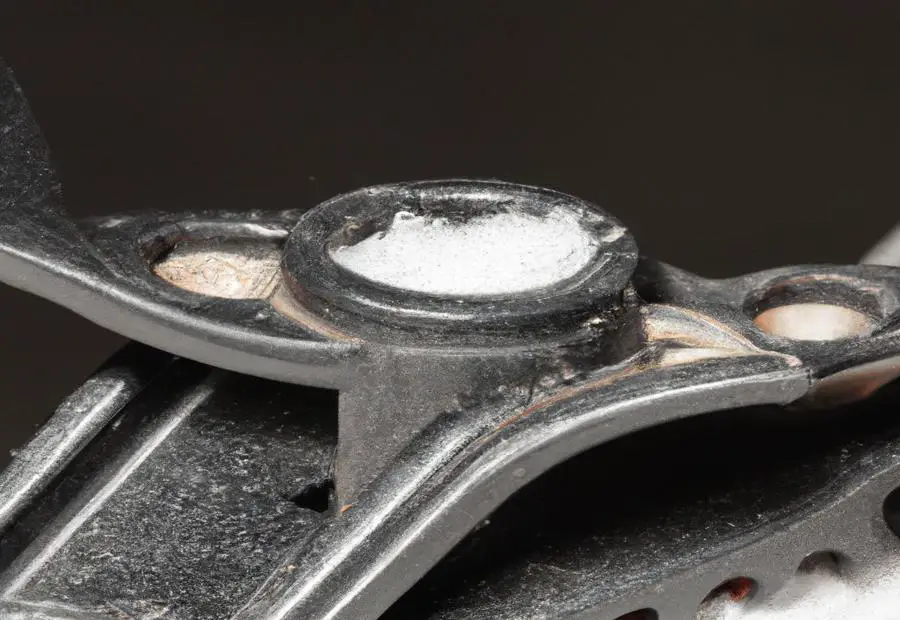
Photo Credits: Gardenerheaven.Com by David Baker
When your snow blower only runs on choke, it can be frustrating and impact its performance. In this section, we’ll dive into the explanation of this common issue and why it’s crucial to address it for optimal snow blower functioning. We’ll provide insights, tips, and techniques to troubleshoot and fix this problem, so you can keep your snow blower running smoothly all winter long.
Explanation of the issue: Snow blower only runs on choke
When your snow blower only runs on choke, it’s a sign that the engine isn’t getting enough fuel. Choke helps with adjusting the airflow and creating a rich fuel mix, especially in cold temps, to get the engine running. But, once it’s warmed up, the choke is unnecessary.
To troubleshoot this problem, try these steps:
- Check the carburetor for blockages that could be hampering fuel flow. Cleaning the carburetor should restore the fuel flow.
- Inspect the fuel cap for any debris that might be obstructing fuel flow. Clean or replace the cap if needed.
- Examine the fuel filter for clogging. If it is, clean or replace the filter.
- Check the spark plug for wear or faults that might interfere with ignition. Replace the plugs as part of your maintenance routine.
- Proactively maintain your snow blower to avoid issues like running only on choke.
- Use a fuel stabilizer when storing fuel, and use the right containers.
For extra tips:
- Inspect air leaks and address causes.
- Clean or replace the air filter.
- Check fuel flow by inspecting hoses, valves, and connections.
- Use fresh gas.
- Test the operation without the gas cap.
- Check adjustable jet functions.
- Use ethanol-free fuel or premium gas.
- Check intake tract for air leaks.
- Clean the carburetor and check for blockages.
- Inspect gaskets and head bolts.
Remember to fix the choke issue! Otherwise, you could be snowed in and choked up!
Importance of fixing the issue for optimal performance
Fixing the issue of a snow blower only running on choke is crucial. When this happens, it means there’s an issue with fuel mixture or air intake. This leads to inefficient combustion, reduced power output, and increased fuel consumption. So, address this issue promptly!
It’s important to understand the choke and carburetor’s role in adjusting airflow and maintaining a proper fuel mixture. The choke controls air entering the engine during startup or cold weather. Malfunctioning or improperly adjusted chokes can cause an overly rich or lean fuel mixture. This leads to the snow blower only working on choke. Incomplete combustion and poor engine performance follow.
Common causes of a snow blower only running on choke include:
- Blocked carburetor from debris or varnish
- Clogged fuel cap
- Dirty or clogged fuel filter
- Faulty spark plug
Solve this issue by cleaning the carburetor, unclogging the fuel cap or filter, and replacing spark plugs.
Regular maintenance is key for preventing snow blower issues. Follow a maintenance schedule. Use fuel stabilizer during storage. Check fuel mixture levels and adjust the carburetor.
Pro Tip: Inspect intake tract for air leaks. Detect and repair these promptly. This helps prevent an imbalance in the fuel mixture and ensures proper combustion.
Don’t forget the choke and carburetor – they make or break your snow blower’s performance.
Understanding the Choke and Carburetor
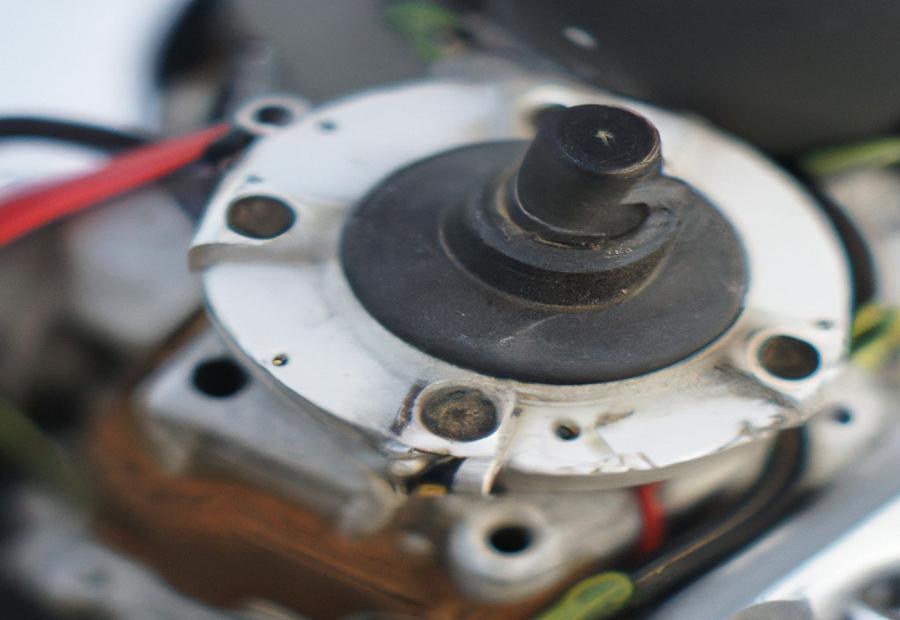
Photo Credits: Gardenerheaven.Com by Edward Scott
The section we will explore is all about understanding the choke and carburetor in a snow blower. Here, we will learn about the choke’s function in adjusting the airflow and the importance of a proper fuel mixture in cold conditions. It’s essential to grasp these concepts to troubleshoot the issue of a snow blower only running on choke.
Brief explanation of the choke’s function in adjusting the airflow
The choke in a snow blower helps to adjust airflow. This restricts the air entering the carburetor, creating a richer fuel mixture for cold conditions. This helps the engine start and run smoothly.
The choke is key for a snow blower’s performance. Without adjusting it, the fuel mixture can become too lean. This makes it hard to start and run the machine. Adjusting the choke ensures the snow blower has enough fuel for combustion.
It also prevents stalling during warm-up. Cold engines need richer fuel mixtures for ignition. The choke provides this by restricting airflow and increasing fuel supply.
Users should understand and maintain the choke. Checking the carburetor, fuel cap, filter and spark plug can prevent blockages or malfunctions. This is essential for a snow blower’s performance in cold weather.
Trying to run a snow blower without a proper fuel mixture in cold conditions is not good!
Importance of a proper fuel mixture in cold conditions
During cold weather, a proper fuel mixture is essential for a snow blower. The choke restricts airflow; increasing fuel concentration for easier engine ignition. This is important as low temperatures can cause gasoline to evaporate slower, leading to inadequate mixtures. A proper mix compensates for this, allowing the engine to run effectively in low temperatures.
In addition, a proper mix keeps the engine running at its full potential. It prevents lean conditions which can damage internal components. To ensure a proper mix in cold conditions, it’s essential to follow manufacturer instructions and use winter-grade fuels. Regular maintenance, such as changing air filters, spark plugs, and fuel filters, also helps.
Overall, a proper fuel mixture is key for reliable performance with a snow blower during freezing weather. By following proactive maintenance practices and using suitable fuels, users can maximize their snow blower’s efficiency in cold conditions. Unblocking the carburetor is a great way to breathe life into a snow blower in cold weather!
Common Causes and Solutions
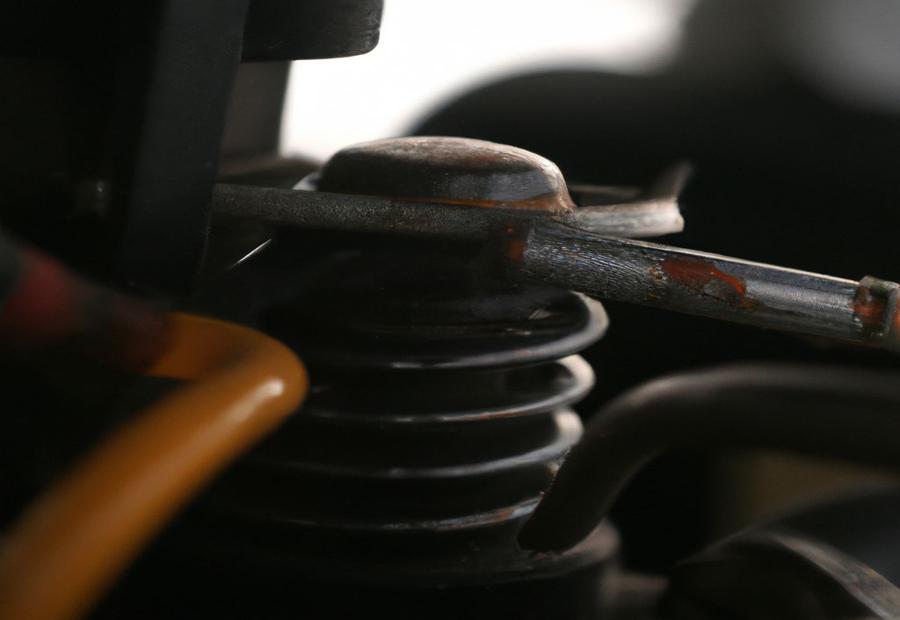
Photo Credits: Gardenerheaven.Com by Jonathan Williams
When your snow blower only runs on choke, there can be several common causes behind this frustrating issue. In this section, we will dive into each of these causes and provide you with solutions to get your snow blower running smoothly again. From a blocked carburetor to a clogged fuel cap, a clogged fuel filter, or a faulty spark plug, we’ll explore the symptoms, signs, and maintenance procedures necessary to fix and troubleshoot the problem effectively.
Blocked carburetor: Causes and cleaning instructions
- Remove the air filter cover and check the carburetor for any visible blockages. These may be caused by dirt, debris, or old fuel’s varnish buildup.
- Spray a carburetor cleaner into all crevices and passages with a tube or straw attachment. This will remove any dirt or buildup.
- Now blow out any loosened debris with compressed air.
- Reassemble the carburetor and make sure it’s securely fastened before turning on the snow blower.
These cleaning steps can help a blocked carburetor and keep your snow blower running smoothly.
Regular maintenance and inspection of the carburetor prevents blockages. Moisture-free fuel tank and fresh fuel are also important. Taking preventive measures keeps your snow blower functioning and extends its life.
Don’t let a blocked carburetor slow down your snow blower! Clean it up and keep it going strong through winter.
Is your fuel cap clogged? Give your snow blower some relief!
Clogged fuel cap: Signs and simple solutions
A clogged fuel cap in a snow blower can cause performance troubles and stop it from working properly. It is important to be mindful of the signs of a clogged fuel cap, and take action to fix it quickly.
Signs of a clogged fuel cap:
- The snow blower only runs on choke.
- Difficulty starting or staying running.
- Lack of power or stalling during use.
- A hissing sound coming from the fuel tank when removing the cap.
To solve this issue, there are several straightforward solutions:
Simple solutions for a clogged fuel cap:
- Check the fuel cap for dirt, debris, or blockages. Clean it before putting it back on the fuel tank.
- Look at the vent hole on top of the cap. Use a wire or needle to remove anything blocking it, to let the air flow through.
- See if the rubber gasket inside the cap is undamaged. Change it if needed to keep an airtight seal and prevent air leaking.
- If cleaning and inspecting the fuel cap doesn’t help, consider replacing it with a new one that fits your snow blower model.
It is necessary to address a clogged fuel cap right away, as it can cause the engine to be inefficient, and may cause damage if not fixed. By noticing these signs and taking simple steps, you can make sure your snow blower works at its best.
By following these steps, you can diagnose and fix issues with a clogged fuel cap in your snow blower. Regular maintenance and inspection of all parts will make your snow blower last longer and perform better.
Clogged fuel filter: Impact and cleaning/replacement procedure if necessary
A clogged fuel filter can mess with your snow blower’s performance. It restricts the flow of fuel to the engine, resulting in poor running or even stalling. Must be dealt with quickly for optimal performance. Here’s a guide:
- Identify the location of the filter. Usually between fuel tank and carburetor.
- Turn off the blower and remove the spark plug wire.
- Take off any covers or panels blocking access.
- Remove the filter from its housing.
- Inspect it for clogging or debris.
Clean a clogged filter:
- Rinse with clean gasoline or specialized cleaner.
- Ensure all debris is gone before reinserting.
Replace if needed:
- Get a compatible replacement from a reliable source.
- Install the new filter and secure it properly.
Check user manual for specific instructions. Also, maintain regularly. Keep fuel clean with high-quality fuels and additives. Check all components regularly. That way you can ensure optimal performance during winter.
Oh, and don’t forget about the spark plug either!
Faulty spark plug: Symptoms and importance of regular replacement
A faulty spark plug can cause noticeable symptoms. Regular replacement is needed to keep your snow blower running optimally. It’s an essential part as it ignites the fuel in the combustion chamber. Faulty spark plugs can lead to misfires, difficulty starting and reduced power.
Replace the spark plug with a new one as per manufacturer specs. Regular maintenance and replacements help prevent further issues and keep performance top-notch. A properly functioning spark plug is key for efficient fuel combustion. It provides the spark to ignite the air-fuel mixture, allowing for smooth operation.
Replacing the spark plug regularly gives improved performance and better gas mileage. Keep your snow blower happy and running smoothly with these essential tips!
Maintenance and Prevention Tips
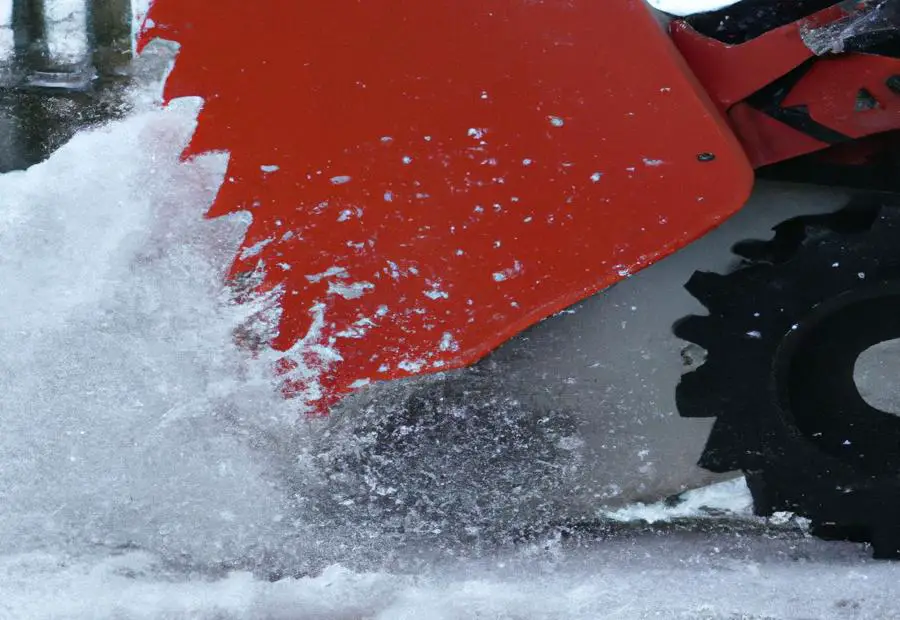
Photo Credits: Gardenerheaven.Com by Terry Garcia
Regular maintenance and proper preventative measures are vital for ensuring the smooth operation of your snow blower. In this section, we’ll explore the importance of keeping up with maintenance tasks and following a schedule. We’ll also discuss the benefits of using a fuel stabilizer and proper fuel storage techniques. Additionally, we’ll touch upon the significance of checking fuel mixture levels and making necessary adjustments to the carburetor. These tips will help you keep your snow blower running efficiently throughout the winter season.
Importance of regular maintenance and following a schedule
Regular maintenance and schedules are essential to maximize a snow blower’s performance. Check fuel levels, inspect spark plugs, clean carburetors, and ensure lubrication. These tasks help detect and fix issues, such as clogged fuel filters or faulty spark plugs. Also, adjust the carburetor when needed for efficient cold weather operation.
By following a schedule, owners can stay on top of these tasks and avoid sudden breakdowns. This routine ensures components are inspected and repairs are done promptly. It extends the machine’s lifespan and reduces major mechanical failure risks.
To sum up, regular maintenance and a schedule are vital for snow blower performance. Proactively address potential problems through routine checks, inspections, cleaning, and adjustments. With proper care and attention, a well-maintained snow blower will function reliably season after season.
Fuel stabilizer usage and proper fuel storage
To secure optimal performance of a snow blower, fuel stabilizer and proper fuel storage are essential. Fuel stabilizer stops the gas from deteriorating during winter and warm months. Additionally, you should empty the gas tank or run it until it’s almost empty before storing. Store any extra fuel in a container made for holding gasoline. Keep it away from open flames or heat.
Regular maintenance is also necessary. Clean or change filters, check spark plugs, and inspect carburetors to prolong your blower’s life. These practices will help prevent issues from poor fuel quality or improper storage.
So don’t mix things up – unless you want your snow blower to blow its top! Use fuel stabilizer and practice proper storage and maintenance for smoother operation and better performance.
Checking fuel mixture levels and adjusting the carburetor when needed
Fuel mixture levels and carburetor adjustment are key for smooth snow blower operation. Check and adjust them regularly to get the best performance.
Investigate your snow blower’s relationship with the choke. Unlock its secrets and make sure it runs smoothly!
Troubleshooting and Additional Tips
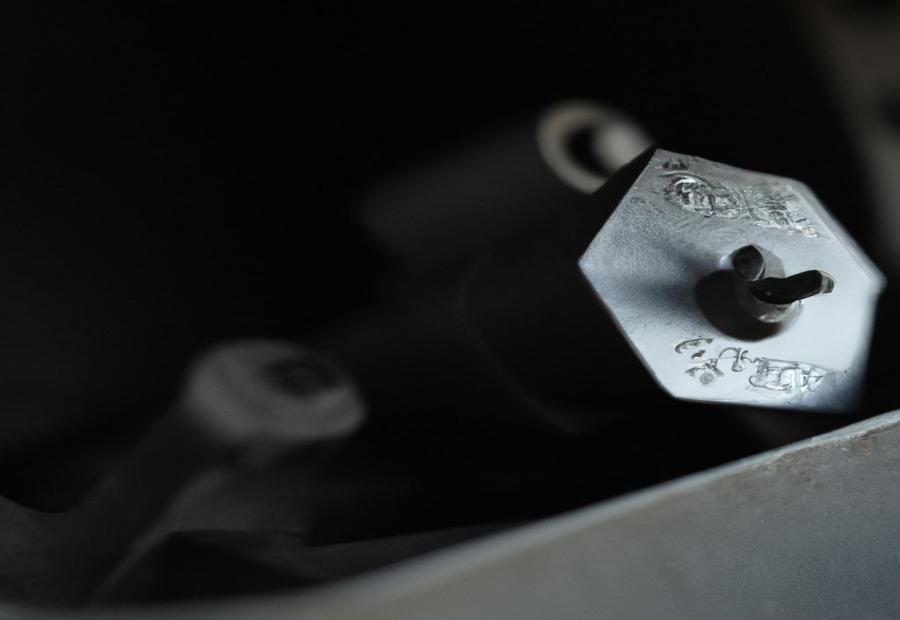
Photo Credits: Gardenerheaven.Com by Albert Brown
In this section, we will explore troubleshooting techniques and additional tips to address the issue of a snow blower that only runs on choke. We’ll discuss testing for air leaks, checking the air filter, spark plug, and fuel flow, as well as using fresh gas and removing the gas cap as troubleshooting steps. Additionally, we’ll consider factors such as adjustable jets, the impact of using ethanol-free fuel or premium gas, inspecting the intake tract for air leaks, cleaning the carburetor, and checking gaskets and head bolts for potential problems.
Testing for air leaks and potential causes
Test for air leaks with this 4-step guide:
- Inspect the Carburetor. Look for cracked gaskets, faulty seals, and worn-out components that could cause air leaks. Replace damaged parts.
- Check the Intake Tract. Search for cracks, gaps, and loose fittings that let in extra air. Use a flashlight for a better view.
- Do a Smoke Test. Use a smoke generator or incense sticks to create smoke near suspected leakage points while running the snow blower engine. Watch for smoke being pulled in.
- Seal Air Leaks. Once you’ve located them, seal them properly. Use gasket sealant, replace faulty seals or gaskets, or tighten loose fittings.
Do these tests regularly. They’ll help keep your snow blower running smoothly and avoid issues due to air leaks.
Checking air filter, spark plug, and fuel flow
Inspecting the air filter, spark plug, and fuel flow is key to good snow blower performance. Not doing so can lead to it only running on choke. Follow these 6 steps to check them:
- Locate the air filter housing and take off the cover with a screwdriver or socket wrench.
- Take out the old filter and look for dirt, debris, or damage. If needed, change it.
- Find the spark plug near the engine’s cylinder head and pull the spark plug wire off.
- Carefully remove the old spark plug with a spark plug socket or wrench. Check it for wear or fouling.
- Clean it or replace with a new one according to the manufacturer’s specs, if it’s dirty or worn out.
- Lastly, disconnect the fuel line from either end and inspect for blockages or restrictions.
These steps will help make sure there are no air filter obstructions, spark plug is fine, and no fuel flow issues. Be aware of other potential causes for the snow blower running only on choke, like blocked carburetors or clogged fuel filters, which can also affect airflow and fuel delivery.
Regularly inspecting these components for cleanliness and proper functioning helps maintain snow blower efficiency and prevents performance issues.
Using fresh gas and removing the gas cap as troubleshooting steps
- Start by draining the fuel from the tank and replacing it with fresh, high-quality gas.
- Then, take the gas cap off the tank. This relieves any pressure or vacuum within the system and allows fuel to flow to the carburetor.
- Lastly, put the gas cap back on and tighten it securely. This prevents fuel leaks and keeps fuel pressure consistent, while also letting air in.
These steps can help ensure an adequate fuel supply to the engine for optimal performance. If these steps don’t work, further inspection and maintenance may be needed. It’s best to go through all troubleshooting steps before seeking professional help if necessary.
Exploring the possibility of an adjustable jet
Let’s explore the possibility of an adjustable jet! It could provide an answer to the snow blower running just on choke. The adjustable jet is part of the carburetor. It controls the fuel mixture. By adjusting this jet, you can change the air-fuel ratio and make the snow blower work better.
To understand this better, let’s look at how a carburetor works. It mixes air and fuel and sends it to the engine. The adjustable jet in the carburetor regulates the fuel flowing into the combustion chamber. You can change the amount of air and fuel by changing the jet. This affects the engine’s performance.
When a snow blower runs just on choke and has trouble staying on, it can mean an air-fuel mix imbalance. This could be because of clogged carburetor parts or a bad electric fuel pump.
Exploring the adjustable jet could help with the choke issue. You can make adjustments to get the right air-fuel mix for your snow blower model. Not all snow blowers have adjustable jets. If yours does, be sure to adjust it carefully and follow the manufacturer’s guidelines.
In conclusion, looking into the adjustable jet option could help with the running on choke issue. It could also improve performance. You might try using a premium fuel to give your snow blower a boost!
Considering the impact of using ethanol-free fuel or premium gas
Ethanol-free fuel or premium gas can have a big effect on your snow blower’s performance and durability. Ethanol-free fuel is the best choice, as it cuts back on potential damage from its corrosive properties. Premium gas, however, has higher octane levels for more efficient combustion and better engine performance.
Ethanol-free fuel stops corrosion in the fuel system and carburetor. Ethanol attracts moisture, which causes rust that clogs and breaks down the engine. By using ethanol-free fuel, you make sure your snow blower runs cleanly.
Premium gas has a higher octane rating, preventing knock or detonation from low-quality fuel. This gives better power output and smoother operation.
Using ethanol-free fuel or premium gas also cleans the spark plugs and stops carbon buildup in the engine. This means easier starts, better fuel use and a longer lifespan for your snow blower.
To get the most out of your snow blower, follow the manufacturer’s recommendations about fuel type and octane rating. Clean or replace air filters, check spark plugs and store your snow blower properly for optimal performance.
Ethanol-free fuel or premium gas is the right choice for your snow blower. It ensures reliable operation in cold weather and a longer life. Make informed choices about fuel to get the most out of your equipment.
Inspecting the intake tract for potential air leaks
Inspect the intake tract for air leaks with these 4 steps:
- Look for cracks, loose connections, and damages in the airflow pathway. Check around the air filter housing, carburetor, and intake manifold.
- Do a smoke test. Use a smoke machine while the engine is running. See if smoke escapes from any seals or connections.
- Pressure test. Utilize a pressure testing kit for the intake system. Monitor the pressure gauge and listen for hissing sounds.
- Apply a soapy water solution. For smaller leaks, apply the solution to gaskets, hoses, and connections while the engine is running. If bubbles appear, it indicates an air leak.
It’s essential to inspect the intake tract for air leaks regularly. Small air leaks can affect engine performance and fuel efficiency. Address any leaks and ensure proper sealing of components to maintain snow blower optimal function.
Remember: Regular maintenance and inspection are key to preventing common snow blower issues like running on choke only.
Cleaning the carburetor and checking for blockages/jets
When dealing with a snow blower that only runs on choke, the carburetor’s condition must be addressed. Cleaning it and ensuring it works properly is key to solving the issue and restoring optimal performance. Here’s a 4-step guide to help:
- Disconnect/turn off the engine for safety.
- Locate the carburetor (check the manual).
- Carefully remove it according to manufacturer guidelines.
- Clean all parts with a carburetor cleaning solution – check all jets and passages are clear and use compressed air if needed.
Plus, look out for signs like poor idling or fuel mixture issues which could mean blockages/jets are clogged. Regular inspection and cleaning are essential for good performance and preventing further blower problems.
Checking gasket and head bolts for problems
Checking the gasket and head bolts of a snow blower is key to troubleshooting and maintenance. Inspect them to spot potential issues that could affect the machine’s performance. Regularly check these components to make sure they’re functioning properly and prevent further damage. Here’s a 5-step guide:
- Turn off the engine and let it cool down completely. This is crucial to avoid accidents.
- Search for the gasket, usually between the cylinder head and engine block. Look for any signs of wear, cracks, or leaks. If you find any, replace the gasket.
- Examine the head bolts that secure the cylinder head. Make sure they are tightened and not loose. Loose bolts can cause compression loss.
- Use a torque wrench to tighten the head bolts as specified by your manufacturer. Don’t overtighten as this can lead to damage.
- Double-check your work by inspecting all connections again. Look for any oil leaks or abnormal gaps.
By following these steps, you’ll be able to effectively check for problems with the gasket and head bolts. Improper installation or worn-out gaskets can result in vacuum leaks or compression loss. These issues may cause difficulties in starting or running smoothly. Manufacturers such as Honda and Craftsman Motors recommend regular inspections for optimal performance maintenance.
Conclusion

Photo Credits: Gardenerheaven.Com by Alexander Walker
Ensuring prompt troubleshooting and fixing of the snow blower issue is crucial for maintaining optimal performance. In this conclusion section, we will recap key points and provide recommendations to address the problem of a snow blower only running on choke. Let’s explore the importance of promptly troubleshooting and fixing the issue, backed by insightful information from reliable sources. Stick around to discover practical tips to keep your snow blower running smoothly throughout the winter season.
Importance of troubleshooting and fixing the issue promptly
It’s key to troubleshoot and fix the issue of a snow blower only running on choke, to guarantee optimal performance. The choke and carburetor adjust the air flow and secure the right fuel mixture, particularly in cold weather.
The choke’s purpose is to manage air entering the carburetor. This affects the fuel-to-air ratio. If the snow blower runs only on choke, there may be an issue with the carburetor or fuel system. A clogged carburetor can disturb air flow, resulting in difficulty starting or running. Plus, a blocked fuel cap or clogged fuel filter can also influence the flow of fuel to the engine.
Maintenance is essential to avoid these problems. Cleaning the carburetor and checking for blockages or jets are essential tasks that should be performed regularly. It’s also important to check the spark plug, and replace it if required, as an incorrect spark plug can cause starting issues.
Troubleshooting includes testing for air leaks, examining the air filter, spark plug, and fuel flow, plus using fresh gas and removing the gas cap. Adjustable jet settings and using ethanol-free fuel or premium gas can improve performance.
To guarantee optimal snow blower performance, troubleshoot and fix any issues quickly. Following a regular maintenance plan, storing fuel with stabilizers, adjusting carburetor settings when needed, and checking for potential air leaks are some suggested measures for keeping a snow blower running smoothly.
Recap of key points and recommendations for maintaining optimal snow blower performance
To maintain optimal snow blower performance, it’s essential to follow these guidelines:
- Regular maintenance
- Correct fuel mixture
- Fuel stabilizer usage
- Avoiding clogs
- Regular spark plug replacement
Also, troubleshooting steps such as:
- Testing for air leaks
- Checking the air filter
- Checking the spark plug
- Checking fuel flow
In addition, users should explore other factors like:
- Using ethanol-free fuel or premium gas instead of regular gasoline
- Inspecting gaskets and head bolts for potential problems or leaks
- Cleaning the carburetor thoroughly while checking for blockages or issues with the jets
This enhances the functionality and extends its lifespan. Promptly fixing any issues that arise is also important.
Some Facts About “Snow Blower Only Runs on Choke? How to Fix and Troubleshoot the Issue”:
- ✅ Snow blowers that only run on full choke may have a carburetor problem. (Source: Team Research)
- ✅ Running a snow blower on full choke will not cause permanent damage, but it should be resolved for optimal performance. (Source: Team Research)
- ✅ The choke on a snow blower adjusts the airflow into the carburetor for a richer fuel mixture in cold conditions. (Source: Team Research)
- ✅ Common causes for a snow blower not staying running or stalling when the choke is off include a blocked carburetor, clogged fuel cap, clogged fuel filter, or faulty spark plug. (Source: Team Research)
- ✅ Old fuel or lack of regular maintenance can cause the carburetor to become blocked, leading to the need for constant use of the choke. (Source: Team Research)
FAQs about Snow Blower Only Runs On Choke? How To Fix And Troubleshoot The Issue
Why does my snow blower only run on full choke?
When a snow blower only runs on full choke, it is usually a sign of a carburetor problem. The choke adjusts the airflow into the carburetor for a richer fuel mixture in cold conditions. If the carburetor is blocked or dirty, it may not be able to supply enough fuel to the engine without the choke.
Is running a snow blower on full choke harmful?
No, running a snow blower on full choke temporarily is not harmful. However, it is not ideal for the long-term performance of the snow blower. It is recommended to resolve the issue to ensure optimal performance.
What are the common causes of a snow blower stalling or not staying running when the choke is off?
There are several common causes for a snow blower stalling or not staying running when the choke is off. These include a blocked carburetor, clogged fuel cap, clogged fuel filter, or a faulty spark plug. Regular maintenance and checking these components can help troubleshoot the issue.
How can I prevent my snow blower’s carburetor from becoming blocked?
To prevent the carburetor from becoming blocked, it is important to use fresh gas and perform regular maintenance. Old fuel and lack of maintenance can lead to blockages. Using a fuel stabilizer and draining the fuel tank before storing the snow blower for an extended period can also help prevent fuel blockages.
What should I do if my snow blower’s carburetor is blocked?
If the carburetor is blocked, it can be cleaned with a carburetor cleaner. In some cases, it may be necessary to remove the carburetor, but in many cases, cleaning it with a carburetor cleaner can solve the issue.
Can I adjust the air/fuel mixture on my snow blower’s carburetor?
Some newer snow blower models may have a carburetor with no adjustable jet, as they are already tuned lean due to EPA rules. However, older models may have an adjustable jet. It is recommended to refer to the snow blower’s carburetor documentation or consult a professional to determine if adjustment is possible.



